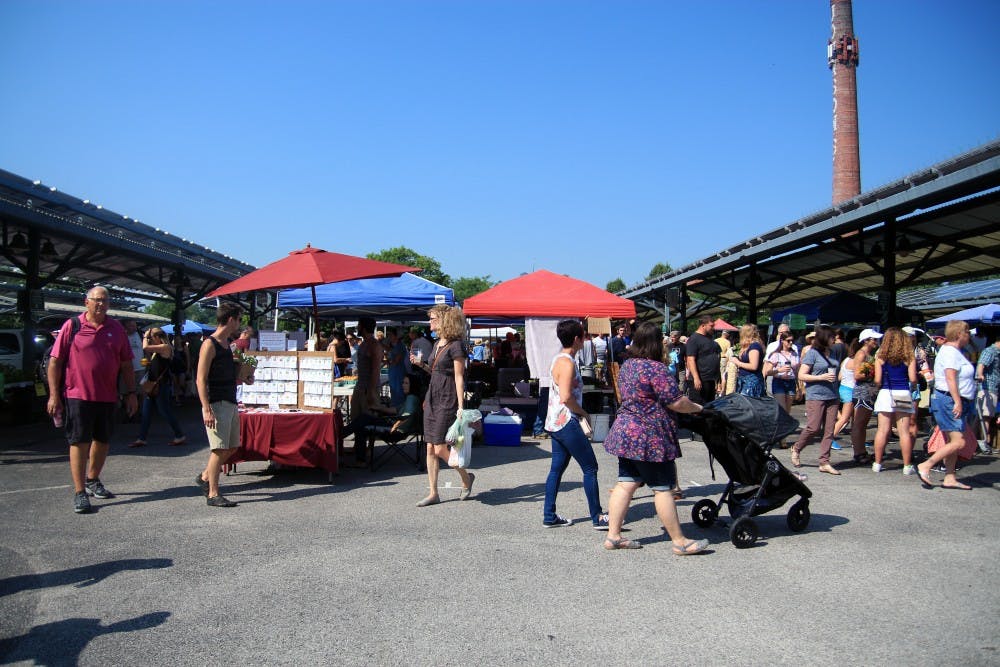Montgomery County farmer Titus Raber is selling half his normal amount of tomatoes this year at the Bloomington Community Farmers’ Market. Dan Weber, a maple syrup farmer from Terre Haute, Indiana, has stopped handing out samples to save his supply for loyal regulars.
While tariff rates are one of the biggest problems for those who grow commodity crops such as soybeans and field corn, local farmers face a natural challenge: the heat.
“As we are experiencing climate change, the challenges of being a farmer in Indiana are greater,” Bloomington Farmers' Market Coordinator Marcia Veldman said.
A report published Monday by the United Nations’ Intergovernmental Panel on Climate Change verified the consequences generated by the planet warming by 1.5 degrees Celsius, or degrees Fahrenheit, as soon as 2040.
If warming increases by 2 degrees Celsius instead, the report stated, risks to ecosystem and human health would drastically rise. Restricting increases to 1.5 degrees Celsius would require a 45 percent reduction from 2010 levels of global carbon dioxide emissions caused by humans by 2030, and a complete disappearance by about 2050, according to the report.
“Limiting warming to 1.5ºC is possible within the laws of chemistry and physics but doing so would require unprecedented changes,” said Jim Skea, co-chair of Intergovernmental Panel of Climate Change Working Group III, in a statement.
For some, the hot weather has been catastrophic.
Weber’s maple syrup farm has produced 27 gallons of sap each year for the past two years, about one sixth of the quantities his trees have yielded for decades.
“The trees are just more affected than I ever would have imagined by different types of weather,” Weber said.
He said he expected this year to be his last attempt at making syrup, but to his surprise, this past winter provided the trees with the frigid temperatures they require to thrive. He ended up with about 40 gallons of sap.
Boiling down this amount of sap requires the same amount of work as the 170 to 180 gallons he has historically expected, but he said he plans to try farming one more year.
“Global warming is so much more impactful when it impacts you directly,” Weber said.
Vendors at the local farmers’ market are generally small- to medium-sized, Veldman said. Most grow produce, some grow meat and nearly all notice the abnormality of 80 degree temperatures in October.
Stripped of the ability to confidently predict the weather, some farmers proactively plan for variability. Douglas Mackey, another local farmers’ market vendor, said he accounts for insects and diseases associated with heat and humidity when he plants his organic produce.
His spinach and cilantro have not fared well against the heat, but numbers have generally remained steady.
“You do more than you need,” Mackey said.
Some crops will almost always do better one year than another, Veldman said, leading farmers to shield themselves through planting a diverse array. But for those working on the front lines, the weather can affect more than their output.
Meanwhile, evidence points to a successful year for farmers across the state. A combination of tariffs and higher yields than normal have even led state agricultural officials to predict grain storage problems, the Associated Press reported.
Many vendors at the local market said the heat hasn’t been a problem. Jim Sigman, who owns a farm in Trafalgar, Indiana, about 45 miles northeast of Bloomington, said he views the hotter climate as a normal variation of nature.
“One year it's hot, the next year it's not," Sigman said. "We’ve always got weather problems.”



